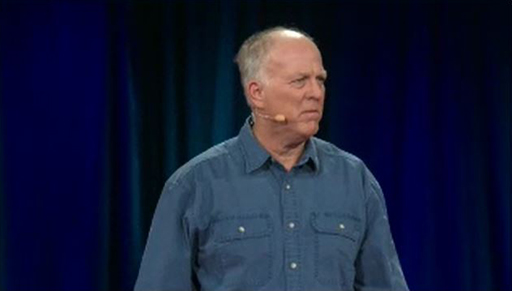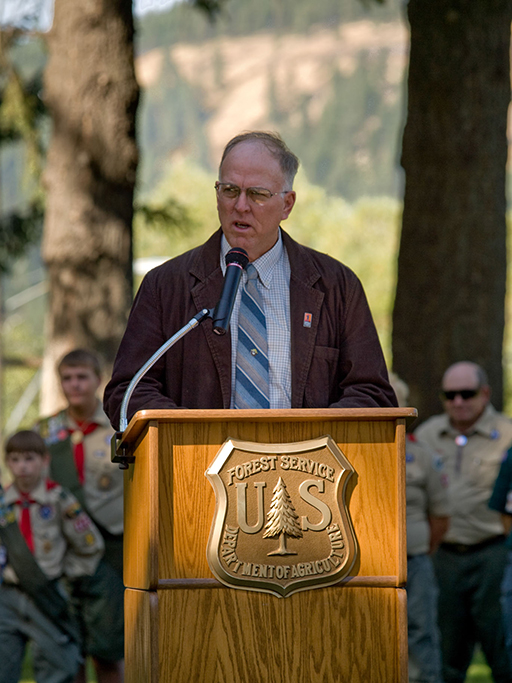3.2 The environmental historian Stephen Pyne
In his book, Fire: Nature and Culture, the environmental historian Stephen Pyne (2012) argues that the environmental challenge posed by the increasingly frequent, dramatic, and dangerous reappearance of wildfires within recent decades is the result of the nature of fire and human actions. Therefore, he approaches wildfires as an entanglement of intersecting environmental and social factors.
Activity 3
In this video Pyne discusses the nature of fire and its relationship to humans and the environment. He gives an overview of the way he understands the relationships between humans, fire, and the environment and how these have changed over time.

Transcript: Video 1: ‘How fire shapes everything’: a talk by Stephen Pyne
While you watch the video, answer the following questions. You might find it useful to watch the video more than once.
Pyne describes fire as a ‘shape shifter’. What do you think he means by this? What do you think are the consequences of fire being a ‘shape shifter’?
Comment
Your answer may include some of the following points.
By describing fire as a ‘shape shifter’, Pyne highlights how the nature of fire changes in response to the context and the materials it burns. Depending on the environmental temperature, the amount of oxygen in the atmosphere, and whether the fire is burning through dry wood, chemicals, man-made environments etc., fire will sometimes be a roaring blaze and sometimes be smouldering embers. In this way, fire is made – or shaped - by its circumstances.
If fire is a shape shifter that responds to the conditions in which it burns, as human actions change the environment the nature of fire will change. This could mean that fires are more likely in areas where the weather and farming practices result in lots of dry wood for fire to burn through. It could also mean that there are certain places where fire is carefully controlled. Pyne explicitly emphasises how the lecture theatre in which he gave this talk had been designed to reduce the risk of fire by including fire doors, sprinkler systems, and fire-retardant materials.
What do you think Pyne means by the ‘right’ and ‘wrong’ kinds of fire? Why does he think that too much of the ‘wrong’ kind of fire and not enough of the ‘right’ kind of fire is making the world uninhabitable?
Comment
Your answer may include some of the following points.
By distinguishing between the ‘right’ and ‘wrong’ kinds of fire, Pyne is emphasising how some wildfire can have positive benefits for ecosystems. This is the ‘right’ kind of fire. However, he is concerned that human attempts to eradicate wildfire in the landscape result in the reduction of its positive benefits to ecosystems that are often attuned to cycles of fire for reproduction and growth. Suppressing wildfire also leads to a build-up of burnable material in the landscape and results in the sorts of catastrophic fires that are experienced today in many semi-arid parts of the world such as the Mediterranean, Australia, California, and other part of western North America. This is the ‘wrong’ kind of fire.
For Pyne, suppressing wildfire has negative impacts on ecosystems. It also makes catastrophic wildfires that have significant impacts on humans, animals, and the environments they live in more likely. He argues that this is contributing to making parts of the world uninhabitable.
Why does Pyne think that the way humans approach the current problem of wildfires is about the relationship between humans and the world?
Comment
Your answer may include some of the following points.
Pyne argues that the key to relationships between humans, fire, and the environment is the way humans understand fire as ‘a technological power’. Human relationships with fire demonstrate how humans have sought mastery and control over the environment and suppressing wildfires is an example of this.
Yet wildfires have an important role to play in environmental sustainability and humans need to recognise this. Pyne says we need to think of fire as a companion, the human relationship with fire is, he says, one of shared stewardship in which humans and wildfire work together to create more diverse and sustainable environments. This means that humans need to move away from attempts to control fire and environments more generally and learn to work constructively and respectfully with the ‘forces of nature’.
The next page will explore how Pyne has used his approach to fire as an environmental and social entanglement to develop a specific framework for understanding the complex interrelationships that shape and inform wildfires.

